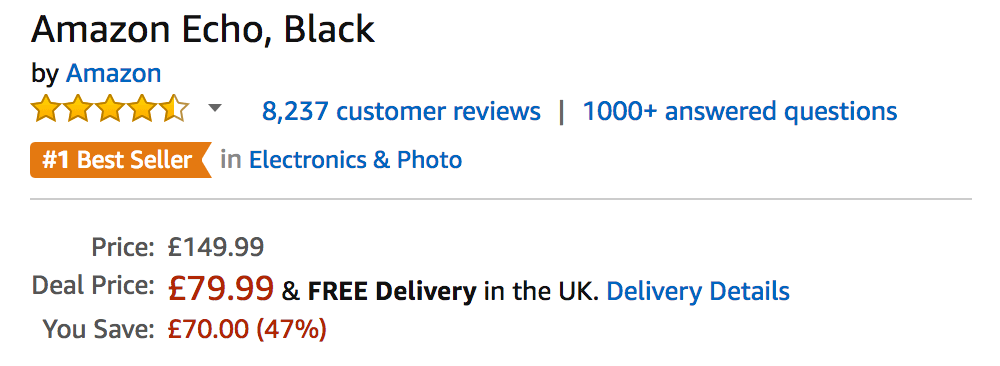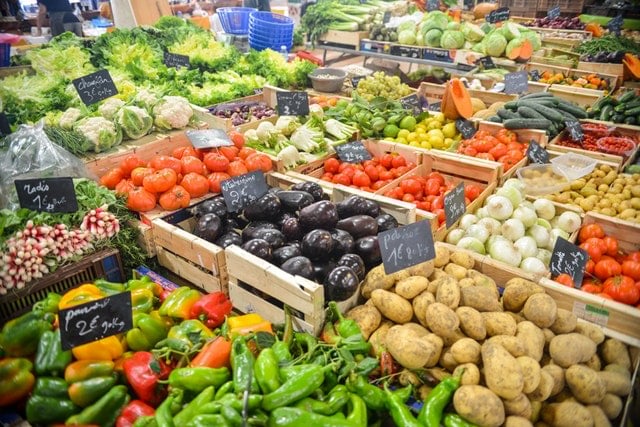The Role of AmazonFresh's Membership Fee in Grocery Price War
 PriceBeam
·
2 minute read
PriceBeam
·
2 minute read

AmazonFresh is Amazon's new competitor to the traditional grocery stores, and the online supermarket is now available in many parts of the US, and recently in select UK cities, too. Both in the UK and US grocery market, the price competition is currently fierce as German discount retailers such as Aldi and Lidl are trying to win market share by outperforming incumbents on price. But now, with the launch of AmazonFresh, this price competition has been intensified. In the UK, research by Profitero suggests that AmazonFresh beats UK supermarkets by at least 17% on price, and according to Ajay Kavan, Vice President of AmazonFresh, a low price will be a competitive priority alongside fast delivery, broad product range, and customer service.
According to a survey from Nielsen, 29% in the UK market know of AmazonFresh, and 59% of these are very likely to use it. Especially the low price AmazonFresh can offer is appealing to these customers. However, if we look closer at the pricing from the new entrant, it is not as low as it may seem.
AmazonFresh requires that you already have an Amazon Prime membership, which comes at £79 per year. In addition, you will have to purchase the "Fresh" add-on, which is £6.99 per month (so roughly £82 per year), and all orders below £40 charge a £3.99 delivery fee. The above-mentioned Nielsen survey found that 30% of AmazonFresh members would use the service once per week, while the remaining 70% would use it less. The average per-order spend is not publicly available, but if we do the math and take into account the additional membership fees and assume the general price level is, in fact, 17% lower than the competitors, a customer with AmazonFresh would have to £90 per month on AmazonFresh before the savings on grocery will make up for the additional fees on AmazonFresh. And that assumes that you only order in batches of £40 or more and avoid the delivery charge.
This is not implying that AmazonFresh is a rip-off. After all, you will get your food delivered, the convenience of online shopping, and all the additional Amazon Prime membership benefits. But what is interesting is that AmazonFresh can create a price leader perception among consumers, while cashing in on the additional fees. Alternatively, if AmazonFresh made their service available to everyone and tried to generate a similar profit through their grocery pricing, their prices would probably lie well above traditional retailers and consequently, they would not have be competitive on price at all.
This has some interesting implications for many businesses, not just in the grocery market. Often, there are several opportunities to cash in on add-on fees, some of which are already being offered for free at the expense of a higher general price level. Take the low-price online clothing retailer ASOS who are currently deteriorating margins to lower prices even further; their delivery is free on orders above £20, which is pretty much any order, unless you order only one item -- but they also have a premier delivery service at £9.99 per year. By charging their £3.00 delivery fee on every order, they could make most of their customers pay for premier delivery, and probably have them pay much more than £9.99.
As described in this blog post, the pain of paying an annual fee will be forgotten after a short period of time, while the pain of paying X% more for a piece of clothing is taken into account with every purchase. Amazon knows this, and leverages this fact to remain competitive on price while still generating satisfactory profits.
.png?width=400&height=100&name=PBLogoTransparent%20(1).png)



